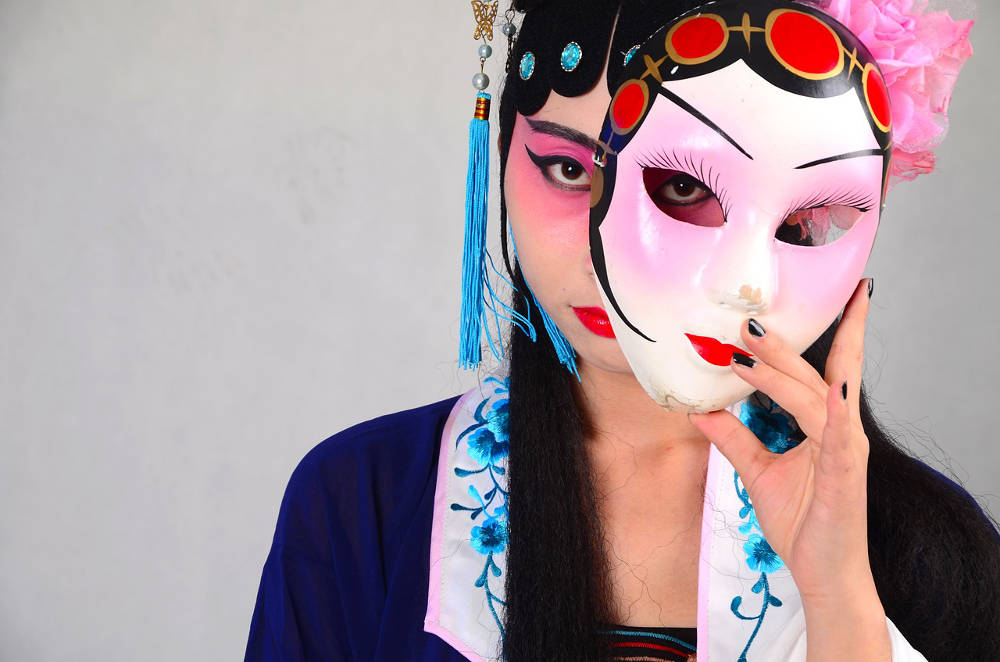[Photograph by Miapowterr under Creative Commons]
Three years ago a Chinese friend and I were killing time at a mall in Beijing. We spotted a Mango outlet with the big magic word: “Sale”. My friend, a shopaholic, rushed in and I followed. After looking at some of the clothes, we came across a rack with basic Mango T-shirts with its logo emblazoned on the front. Renminbi (RMB) 30, the price tag said, which is much, much lower compared with Mango’s standard prices in China. My friend scrunched up her nose and turned to me. “Let’s leave,” she said. I stared puzzled while she stomped out.
“I will never buy from Mango again,” she said later with a note of disgust. “It’s too cheap.”
To put things into context, a Grande Latte at a Starbucks in China costs RMB 30. A standard sandwich at Subway costs RMB 25. So the T-shirt, something that can be used multiple times and comes for the price of a single cup of coffee, is a steal at RMB 30, right? Wrong.
From that day on, my friend wouldn’t be caught dead in a Mango T-shirt. By dropping the price of the T-shirt, it had just become more accessible to a wider group of consumers and that fact alone made it so much more unattractive for my friend who had frequently bought from Mango earlier.
Like my friend, China’s consumers are becoming hard to decipher.
What complicates matters is the fact that Chinese consumers are on different trajectories in terms of their evolution, and the speed of evolution varies. Let me explain. If you look at the tier 1 cities, you’ll find a varied set of consumer groups. One group in particular doesn’t fit into the traditional notion of the developing world consumer in terms of how they spend and how they live. Their jet-setting lifestyles are similar to their rich Western counterparts, even though their values might be different.
The second set, a category I would put my friend in, aspires to join the club of jet-setters but isn’t quite there yet. These consumers, I would say, are among the more complicated ones from a marketer’s perspective because you can’t say for sure when they will spend money with thrift in mind and when will they spend with their image in mind. My friend, for instance, doesn’t bat an eyelid while splurging on a $1,000 purse or staying at the Ritz Carlton while holidaying during her two vacations a year, but during lunch hour in office she would rather eat at the food court than waste money on a more expensive restaurant. Her spending behaviour is full of contradictions.
Then of course, there are the consumers at the lower end who care even more about value for money but are aspirational too. Our maid recently got a new phone. Now she carries both, her old battered push-button phone, as well as her slick new Lenovo touchscreen phone. She still makes calls from her old phone. And the new one, sitting in its original box in her purse, is used to surf the net and for messaging on WeChat. As you go down the city tiers, the picture gets even more complicated than this.
One thing is common to all the different consumer groups. They are all constantly looking to upgrade if and when their wallets would allow. More and more Chinese consumers are now preferring to buy premium goods. As a recent McKinsey survey says, “Chinese consumers are also increasingly trading up from mass products to premium products: we found that 50 percent now seek the best and most expensive offering, a significant increase over previous years.” McKinsey’s survey further found that the premium segment was growing faster than mass and value segments.
These subtle shifts can often catch companies unawares. Take Procter & Gamble (P&G). For years P&G was held up as the text book case study of how to win in China. It was the company that brought the disposable diaper revolution to China with the Pampers brand—before Pampers came to China, parents here didn’t bother with store-bought diapers. In 2010 it was leading in 13 of the 14 categories it was present in in China. In 2012, China was P&G’s second-biggest market globally and was contributing nearly 6% of its global sales.
But it wasn’t just the high-end that P&G focused on: it made an attempt to create—and customize—products for lower income households in China, a departure from its usual core business. It was betting big on these emerging consumers to help it reach its ambitious goal of a billion customers by 2015. The focus on what the company called the “$2 a day” consumer meant immersing research teams in their environment and coming up with offerings and price points more relevant to their situations. In effect, P&G was trying to straddle different parts of the income pyramid, and was apparently doing it successfully.
Despite doing what seemed to be, theoretically speaking, all the right things, things haven’t turned out well for P&G in China and it has started losing ground here. The mistake, as P&G chief executive David Taylor puts it, lies in misjudging the Chinese market and perhaps losing focus on the high-end market. “We looked at China too much like a developing market as opposed to the most-discerning market in the world,” he said at a conference. As a Chinese consumer told him, P&G’s products were “old and outdated and not high-end enough.” In order to regain lost ground, now the company is focusing on expanding its higher-priced offerings in China.
So what went wrong? The Chinese consumer changed. A recent report from market research firm Millward Brown may help put things into perspective. It says: “[Chinese consumers] sought to save money on items viewed as commodities, while for other items, particularly in personal care and healthcare, consumers willingly paid a premium when justified.”
What marketers call the ‘Chinese consumer’ has become this ambiguous shape-shifting mass that is constantly evolving. If they are to win in this increasingly complex country, marketers need to frame their understanding of the Chinese consumer at one point of time, rapidly unlearn, and then reframe their understanding again. A single misstep, after all, can become a costly mistake.
Given this backdrop, it might be better for companies to focus on a certain segment instead of trying to win over different consumer groups by straddling the income pyramid. In 2014, L’Oreal pulled its Garnier brand out of the Chinese market after seven years.
Somewhat like P&G, L’Oreal also straddles different parts of the income pyramid in China. It was at the top end with brands like Lancome, YSL, Shu Uemura and Yue Sai, in the middle with brands like Vichy, Kerastase and Matrix and the lower-end with brands like Maybelline, L’Oreal Paris, Mini-Nurse and Garnier. Technically, each of these brands cater to different kinds of consumers who can afford different price points. But that strategy has its limits.
One of the reasons for Garnier’s demise in China was how the consumers viewed the brand. As Shaun Rein, author of books like The End of Cheap China, told the Financial Times, Garnier was seen as a “cheap L’Oreal”. “Garnier is not cheap enough and it’s not luxury enough. Chinese consumers are no longer willing to pay a premium for a Western brand unless it is demonstrably better,” he said.
For foreign consumer brands in China, it might be a better idea to narrow down the focus to fewer segments rather than try to cast the net wide and end up diluting strategic focus in the process.

